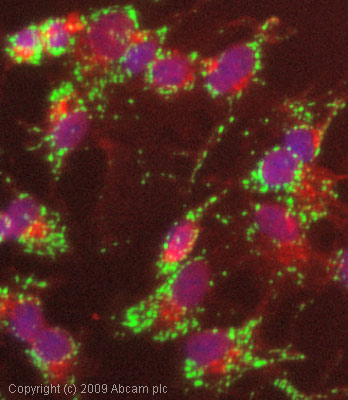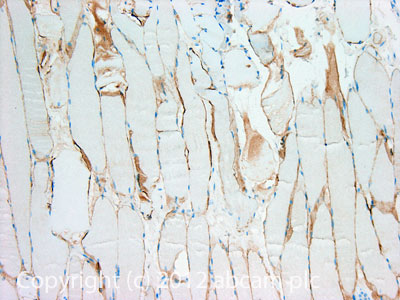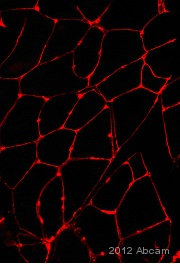Anti-Dystrophin antibody [1808]
| Name | Anti-Dystrophin antibody [1808] |
|---|---|
| Supplier | Abcam |
| Catalog | ab3149 |
| Prices | $400.00 |
| Sizes | 500 µl |
| Host | Mouse |
| Clonality | Monoclonal |
| Isotype | IgG1 |
| Clone | 1808 |
| Applications | Electron microscopy ICC/IF ICC/IF IHC-P WB IHC-F |
| Species Reactivities | Mouse, Rat, Chicken, Human, Xenopus, Torpedo |
| Antigen | Acetylcholine receptor (AChR) enriched membranes and peripheral membrane proteins from Torpedo nobiliana electric organ |
| Description | Mouse Monoclonal |
| Gene | DMD |
| Conjugate | Unconjugated |
| Supplier Page | Shop |
Product images
Product References
Oxytocin is an age-specific circulating hormone that is necessary for muscle - Oxytocin is an age-specific circulating hormone that is necessary for muscle
Elabd C, Cousin W, Upadhyayula P, Chen RY, Chooljian MS, Li J, Kung S, Jiang KP, Conboy IM. Nat Commun. 2014 Jun 10;5:4082.
Transgenic expression of inclusion body myopathy associated mutant p97/VCP causes - Transgenic expression of inclusion body myopathy associated mutant p97/VCP causes
Weihl CC, Miller SE, Hanson PI, Pestronk A. Hum Mol Genet. 2007 Apr 15;16(8):919-28. Epub 2007 Feb 28.
Localization of dystrophin relative to acetylcholine receptor domains in electric - Localization of dystrophin relative to acetylcholine receptor domains in electric
Sealock R, Butler MH, Kramarcy NR, Gao KX, Murnane AA, Douville K, Froehner SC. J Cell Biol. 1991 Jun;113(5):1133-44.


